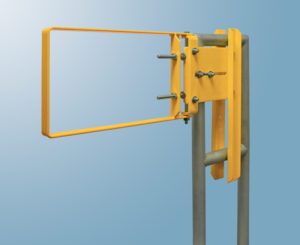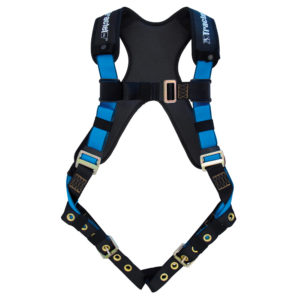
Quality and productivity are some of the most important metrics in renovation and construction jobs. Of course, the ability to execute the work safely is equally important — and fall protection is a major consideration. What’s the best way to manage the risks of workers, not to mention maintain OSHA compliance, without sacrificing performance? This is a key question safety managers need to ask themselves before starting any renovation work.
A Quick Review: OSHA Standards 1910 & 1926
Before considering the best options for renovation work, it’s a good idea to review the OSHA rules on fall protection. It differs per industry, but there are two main OSHA sections that should be considered. The first is OSHA 1910, which guides general industry, and the second is OSHA 1926, which focuses on construction in particular. OSHA makes it clear that it’s up to safety management to correctly apply the right section, so it’s worthwhile to take a pause and review. With new construction sites, 1926 is often the best course of action. But in the case of a renovation, determining which section to consider can be tricky.
OSHA 1910 tends to be a bit stricter on elevated work requirements than 1926. For example, OSHA 1910 states that workers on an elevated surface above four feet need fall protection, while OSHA 1926 maintains a six foot limit. Meanwhile, OSHA 1926 allows the use of safety nets while 1910 doesn’t. Both standards have similar requirements for personal fall arrest systems, with a maximum allowable travel of six feet and a maximum force of 1800 pounds.
When it comes to guardrail and safety gate systems, the guidelines are similar as well. Both OSHA 1910 and 1926 state that guardrails should be approximately 42 inches above the working surface and capable of withstanding 200 pounds, however, each regulation allots for specific variables in this area. They also state that a self-closing industrial swing gate needs to be used at guardrail access points, while 1926 alone requires gates around hoist openings.
Now that we’ve reviewed the regulations, let’s take a closer look at some fall safety options during the renovation process.
First, Look at Your Site Conditions
Site conditions are the first thing you’ll need to consider when determining fall protection requirements. Specifically, where will the work be taking place? Will it be a rooftop or a mezzanine? Is it over a process vessel? Does foot traffic flow through? Are there any other inherent fall hazards? If your renovation site is on an elevated surface, fall protection is likely necessary. Inspecting the site and installing or improving fall safety beforehand prevents unnecessary interruptions down the road once work has begun. It also helps you decipher the best fall safety system for the job.
![]() Harness and Lanyard System Options
Harness and Lanyard System Options
Personal fall arrest systems are inexpensive and effective when used properly. Units need to be inspected for wear and tear before use and each worker using them must be trained on them properly. Harness systems also require an anchorage system, which can be permanent or temporary, that is strong enough to hold the sudden weight imposed by a falling worker. In many cases, it’s helpful to a consult a safety expert for harness and lanyard training to make sure everyone is on the same page. Understanding both how to inspect and use these systems is imperative to keeping everyone safe on the job.
Safety Railing and Safety Gate Options
If you’re doing renovation work, installing safety railings may seem like a big undertaking considering it’s only a temporary work site. But as we’ve already touched on, renovation work is not exempt from OSHA requirements and renovation work sites can be dangerous. Furthermore, renovations frequently take longer than planned. Passive fall protection systems like a guard rail or safety gate take the guess work out of safety, and make it easier for your employees to focus on their job. And fortunately, safety railings can be purchased as both temporary and permanent solutions. For renovation work, a non-penetrating rail system is a convenient option.

Now that you understand the best ways to ensure worker safety during a renovation, it’s a good idea to inform all employees that work is being done and to take added safety measures ahead of time. One way is to hang warning signs in and around all construction areas, as well as breakrooms and locker rooms. Another method is to send emails to all employees to remind them that work is being done — both before the work begins and during the renovation. A third option is to encourage employees to download a safety app for their smart phones. Many construction safety apps are designed specifically for those who work at hazardous heights and can send alarms in the case of a fall. Every added step you take only helps maintain a safe and productive environment.
Why Employee Safety Should be Your Priority — Even During a Renovation
Worker safety should always be a primary concern. Beyond the desire to keep your workers safe, it makes good business sense. While renovations are usually temporary, they can create hazardous conditions that can halt projects altogether. Lost time and productivity hurt the bottom line, which affects every employee from the CEO to the most recent new hire. It’s the responsibility of every safety manager to make sure that their companies meet not only legal standards, but that they do everything possible to create a safe and productive work environment, for the good of your employees — and the good of your company.











